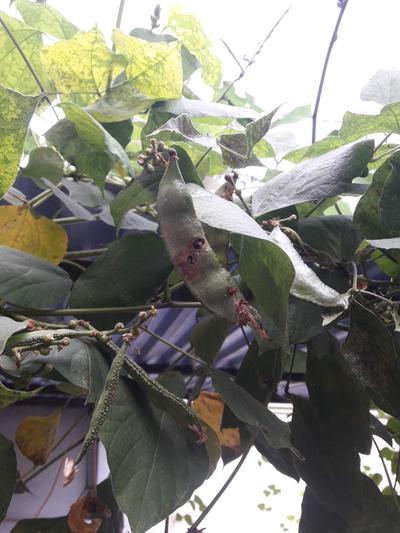Bean Shoot Borer
Epinotia aporema
Insect
In a Nutshell
- Feeding damage on leaves, shoot, buds and flowers.
- Stunted growth.
- Yellowish to pale green larvae with black head and first abdominal segment.
Can also be found in
Symptoms
The larvae of Epinotia aporema feed on vegetative parts which leads to feeding damage, mostly on young leaflets, and a reduction of growth. Larval feeding can severely affect the flower buds and prevent the production of seeds, an important commodity in the forage legumes alfalfa and lotus.
Recommendations

Organic Control
If available and approved, apply Epinotia aporema granulovirus (EpapGV) for biological control. The virus causes a wide infection in the host tissues when ingested by the larvae. Or use Bacillus thuringiensis against the larvae.

Chemical Control
Always consider an integrated approach with preventive measures together with biological treatments if available. Use common insecticides to minimize the abundance of the larvae. Switch between different active ingredients and operate after good agricultural practice.
What caused it?
These beetles can be present from the time plants emerge until maturity. The larvae usually appear during the vegetative stage, approximately 30 days after planting. They can be yellowish to pale green in color and have a black head and a black first abdominal segment. Conspicuous short spines are extruding from their skin. They have about 30 to 40 legs with small crochets. The entire life cycle takes 33 to 46 days depending on temperature and environment conditions. In temperate regions with 31°C to 34°C the insect is active throughout the year, going through five to six generations during this time.
Preventive Measures
- Monitor your plants regularly and if a critical number of plants shows symptoms, implement disease management measures.
- Use pheromone traps.
- Perform crop rotation with non host crops.



